With the weekend comes an almost primal need to grill steaks, but maybe you, like me are having trouble making choices. We’ve been working our way through the various steak cuts to see how they compare and help inform our decisions. Let’s consider the differences between Porterhouse vs. Ribeye and weigh all the options.
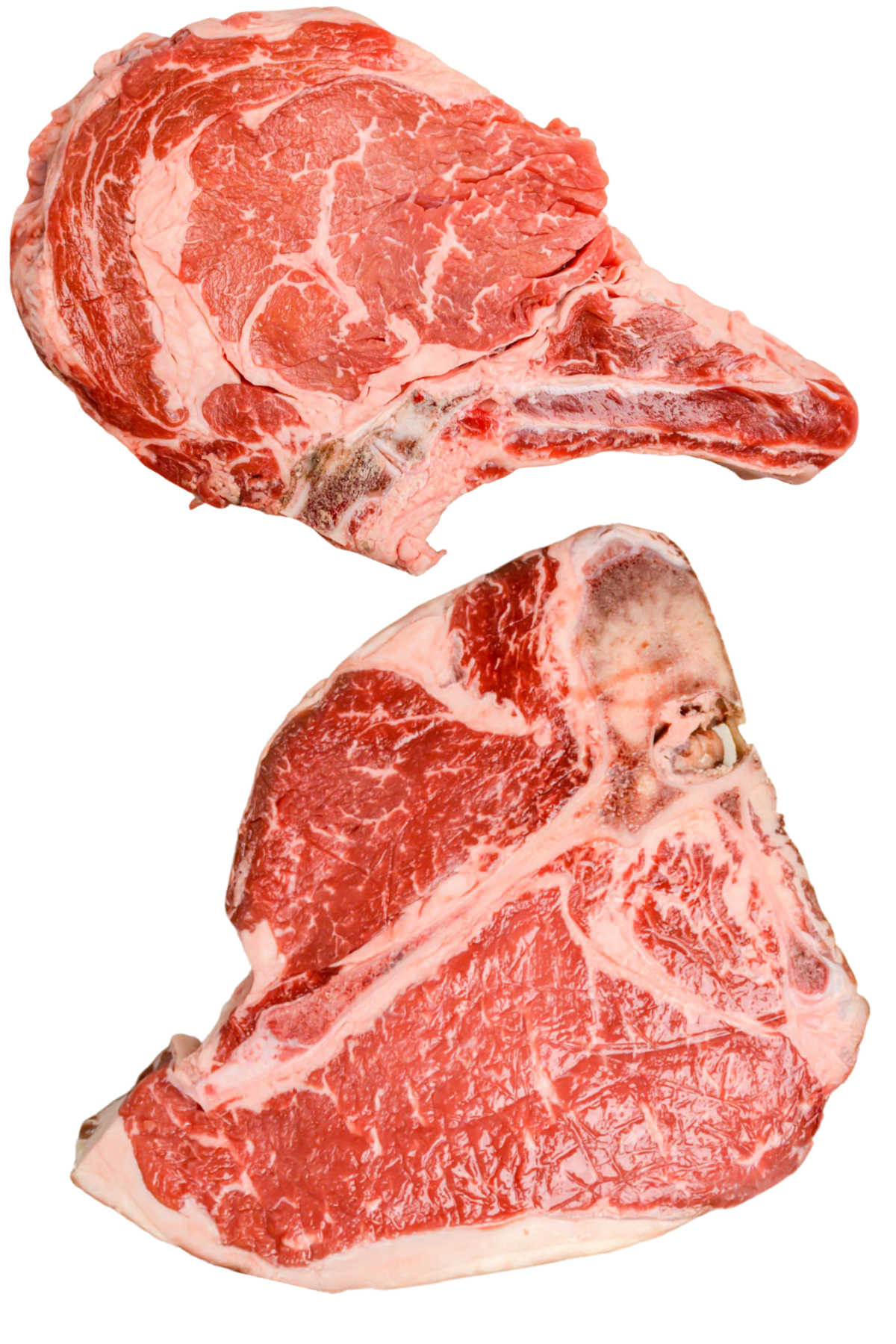
What is a Porterhouse Steak?
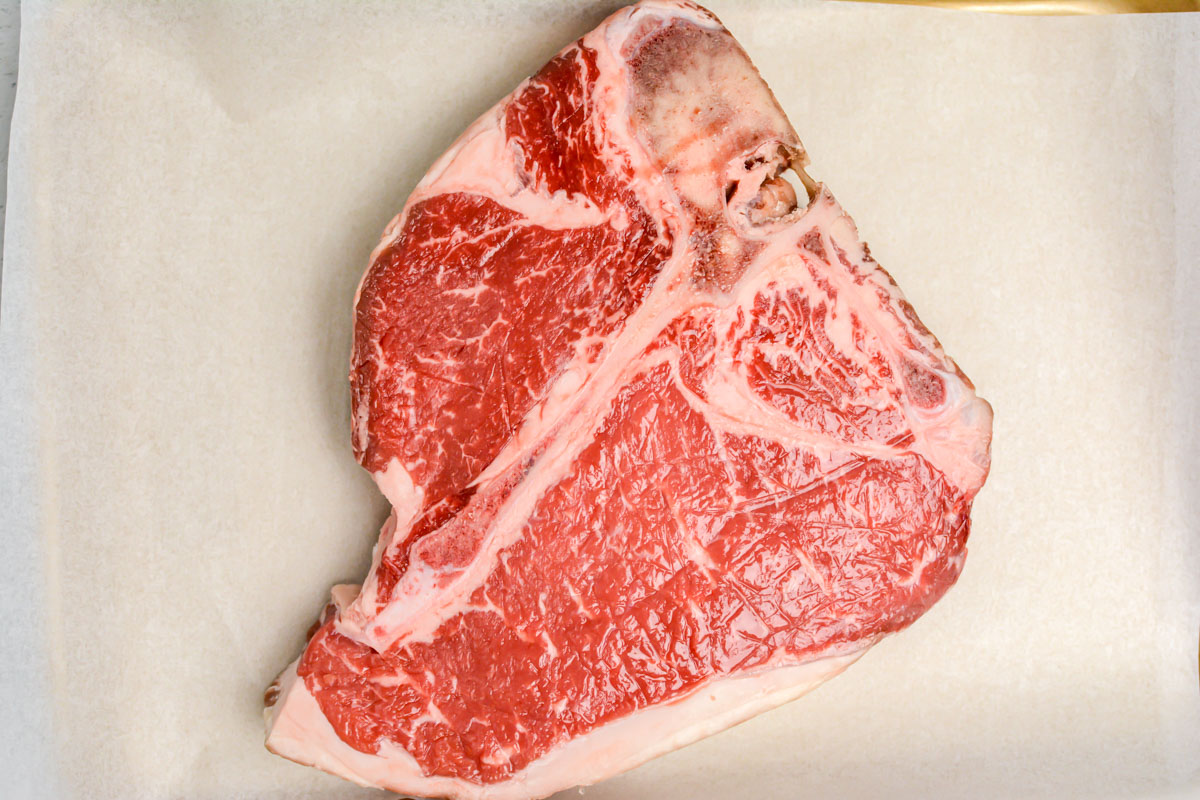
Quite possibly the largest steak you will ever see, the Porterhouse Steak is actually a combination of two different highly popular steaks: the Filet Mignon and the New York Strip.
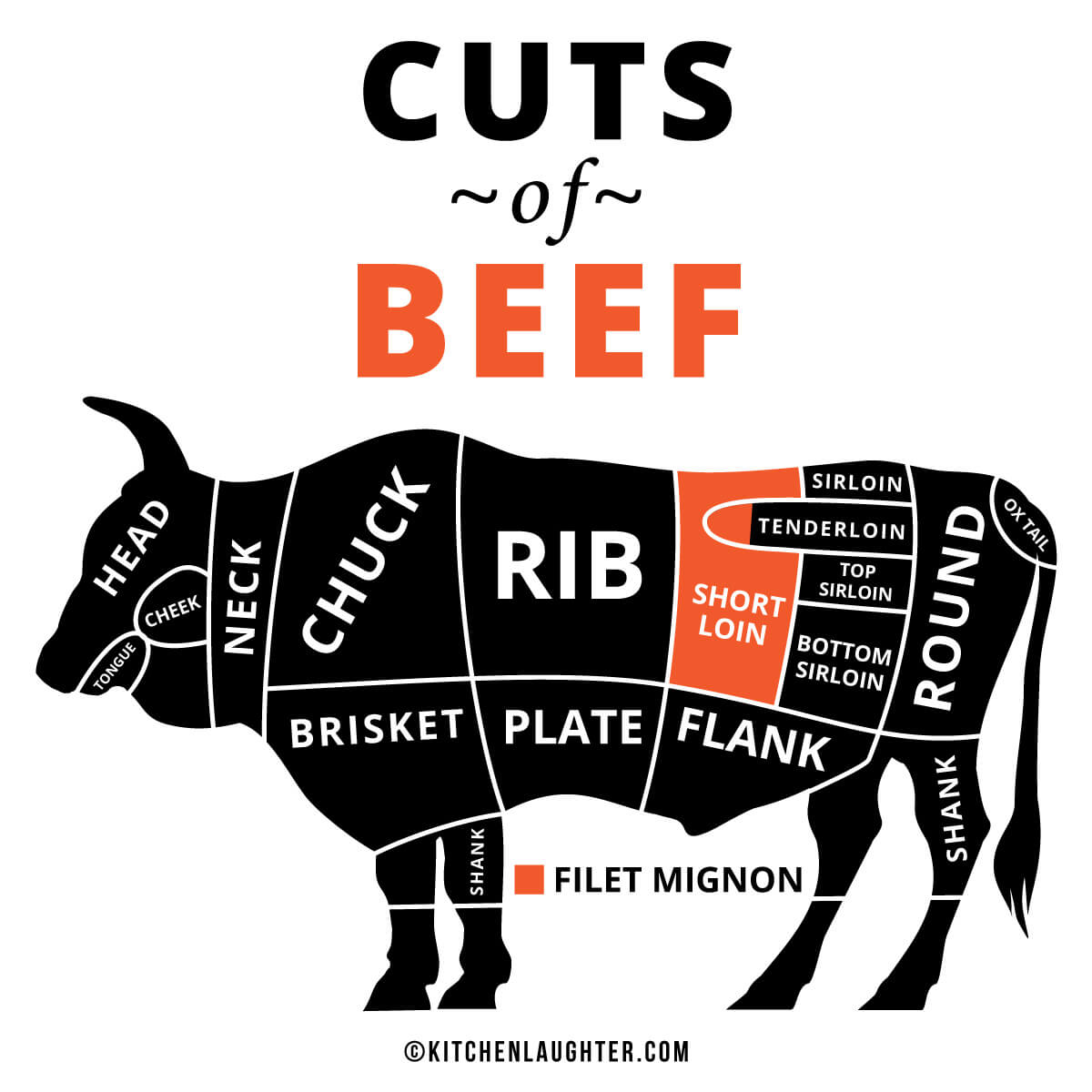
Each of these famous cuts lies on opposite sides of the same bone. So Porterhouse Steak is the bone-in version of the two steaks in one big piece.
Porterhouse steaks can weigh up to two pounds and have over 1,000 calories. It’s a lot of meat. The porterhouse is cut from where the tenderloin muscle is at its largest from the short loin of the cow.
What is Ribeye?
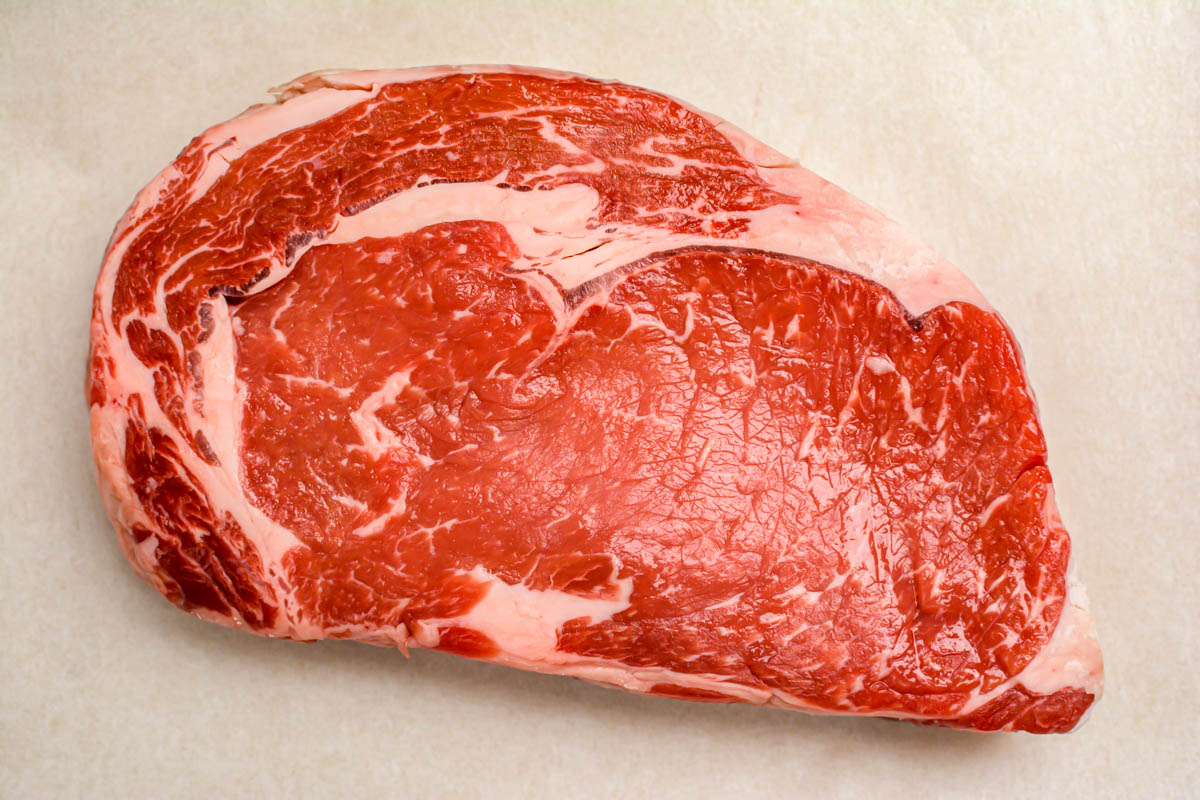
If you take the very center of the prime rib and remove the bone you have a ribeye. This meat is incredibly flavorful and tender. This cut of beef come from close proximity to the rib cage. It is perfectly marbled which gives it that intense flavor we all recognize. A properly cooked ribeye is arguably the best steak money can buy.
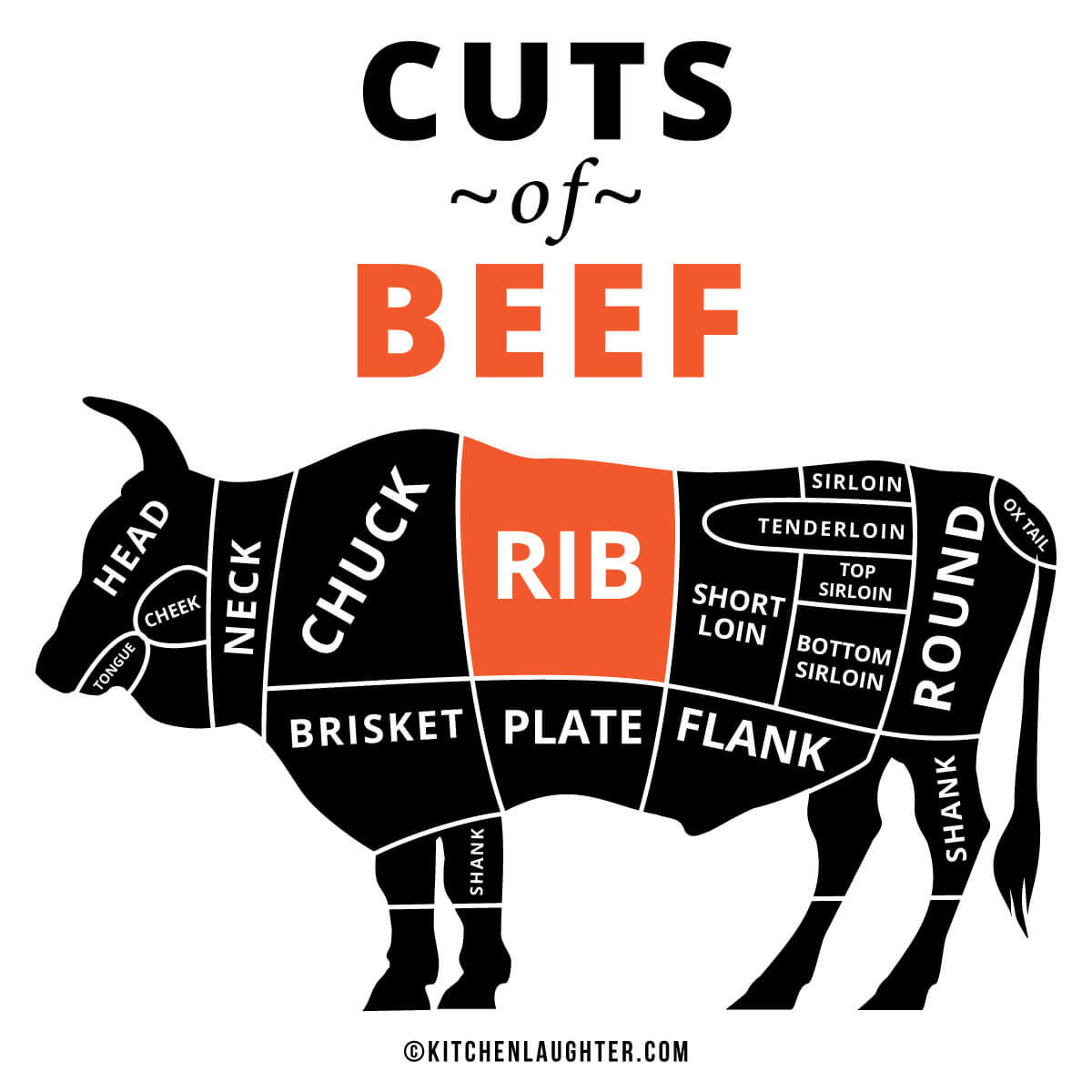
Ribeye steaks are usually between 10-16 ounces and may contain a ribbon of fat and tender meat on one end. This is often called the Ribeye Cap and is one of the most sought after cuts available. We grilled Ribeye Cap and let me tell you – it was insanely good!
Rich and juicy, ribeye can be cut with or without the bone. We recommend boneless because it will be easier to get the perfect doneness throughout.
The ribeye cut is actually a combination of three different muscles and you may notice the difference between each section of your steak as you eat. The longissimus dorsi, the spinalis dorsi, and the complexus are very similar to each other but each have a distinctive flavor and texture. The rib primal cut comes from a section stretching from the short loin to the shoulder and the entire length of this section is cut into ribeyes so there is variation between a steak cut from closer to the chuck verses a steak cut from closer to the short loin.
📋 Key Differences
| Porterhouse | Ribeye | |
|---|---|---|
| Cost | Roughly $22 per pound. | Roughly $15 per pound. |
| Texture | Exquisitely Tender and consistent. | Tender and Buttery |
| Flavor | Mild to rich. | Rich and Intense |
| Thickness | 1 1/2″-3″ thick. | ½”-2″ thick. |
| Best Finish | Medium rare. | Sear to medium or medium rare. |
| Cut | From the Short Loin | Center of Prime Rib. Boneless. |
| Size | 1-2 pounds each. | 1 Pound Packages |
| Cooking Methods | Grill or Pan Sear | Grill or Pan Sear |
| Other Names | King Steak, T-Bone. A Porterhouse is always a T-bone, but a t-bone is not always a porterhouse. | Boneless rib steak, entrecot (Spanish), Faux filet (French Canadian), sarket steak, Scotch fillet, Spencer, or beauty steak. |
❓ How to Choose
One easy way to choose between Porterhouse vs Ribeye is how hungry are you tonight or will you be sharing with someone? With nearly two pounds and over 1000 calories, there is a reason some call the porterhouse a King Steak. If you don’t have the appetite of a king, maybe save the porterhouse for another weekend, or share it with a friend or family.
All kidding aside, the cost is a definite factor with as much as a $10 swing between the two cuts. Of course, sales and deals can change all of that quickly.
Each of these steaks can be purchased in varying grades which signifies quality and will directly impact the flavor and tenderness of the meat. The three grades of meat are prime, choice and select. You can buy a ribeye or a porterhouse in each of these three grades. For the most satisfaction with your meal, look for prime beef. If you cannot find prime grade beef at your local markets, buy the best pick of the choice meats. Sometimes this alone is a great way to choose between porterhouse and ribeye.
🧑🍳 How to Cook
Porterhouse
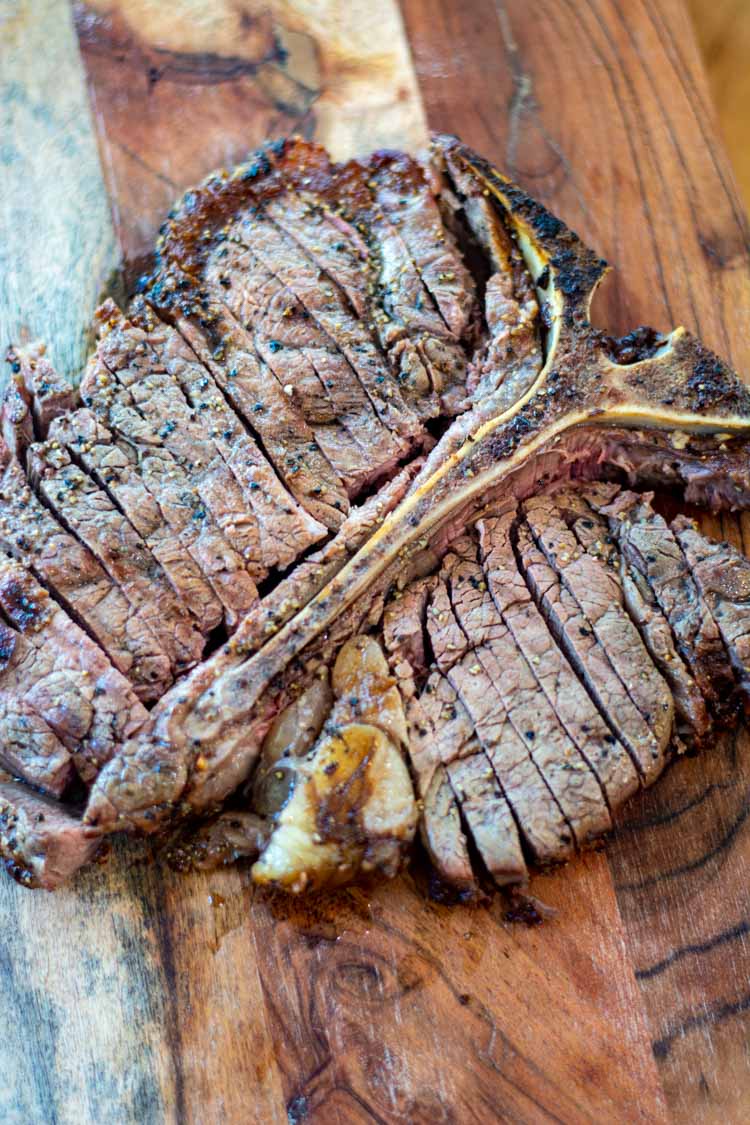
A porterhouse steak is best cooked to medium rare because both sides of the steak are easy to overcook and dry out. A hot cast iron skillet or hot grill will both work. Be sure to take a temperature reading near the bone in the thickest part of the meat since that is the area that will cook the slowest.
Your porterhouse steak will take 6-10 minutes per side on a very hot grill depending on the thickness and size of the steak as well as your desired doneness. Medium rare is an internal temperature of 130-135ºF.
Ribeye
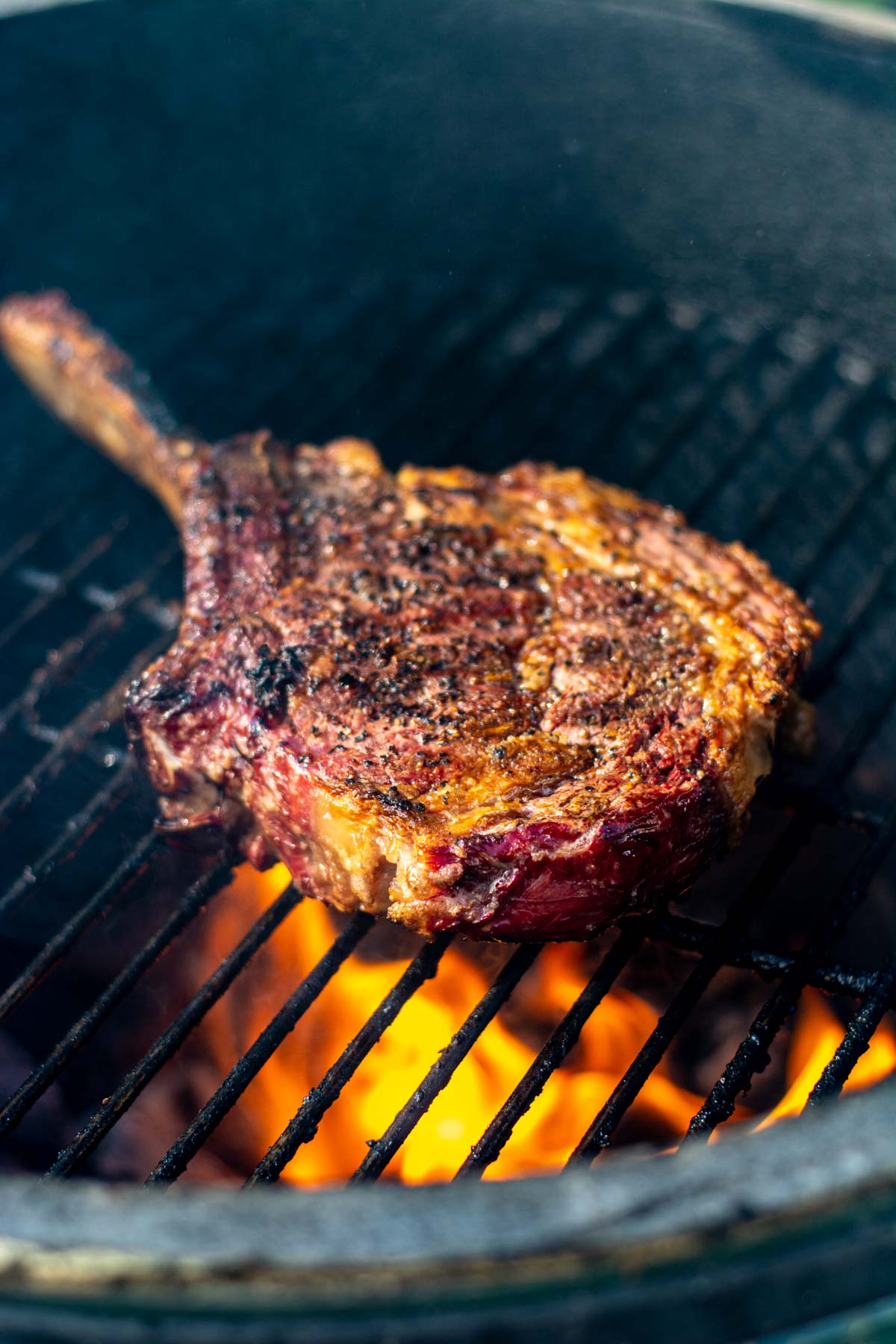
The most popular way to cook ribeye is on a grill or flat top. You want to get the grill really hot, season the steaks on both sides and then sear both sides of the ribeye for three to four minutes. This gives a nice char while cooking the inside to a nice medium internal temperature of (135-145ºF) or medium rare.
Another very popular way to cook ribeye steaks in on a hot cast iron skillet and this method also works very well. You will need to get the skillet really hot before you sear the steaks and then the process is pretty much the same.
The Reverse Sear Cowboy Ribeye is also a great choice.
📝 Recipe Tips
You will want to print out the Grilling Times and Temperature Chart to make sure each steak comes out exactly the way you want. It’s very handy tool!
Use an instant read thermometer to cook your steak to the perfect temperature. You cannot just base it on time because steaks vary in thickness and size and grills or skillets vary in temperature. Remove your steak from the grill and let it rest while you fill your plate with side dishes.
A porterhouse steak will need about ten minutes to rest because of the thickness of the steak.
Letting your steak come up to room temperature before you cook it results in the perfect texture and juicy goodness.
🥩 How to Serve
When considering Porterhouse vs Ribeye, the side dishes we recommend are pretty much the same. A good steak deserves amazing sides as a complement! Try your beautifully prepare porterhouse or ribeye steak with Amazing Smoked Potato Salad, Grilled Sweet Potato Casserole, Grilled Mexican Street Corn Elote or Grilled Bourbon Peach Baked Beans.
Serve leftovers as part of a soup, stew, stir-fry or sandwich! Or you can make the classic: steak and eggs.
How to Store Leftover Steak
Leftover steak will need to be refrigerated to prevent bacteria growth. Place your leftover steaks in a plastic baggy or airtight container and keep the in the fridge for 2-3 days. Reheat the steaks in a hot skillet.
Freeze leftover steaks for up to three months in an airtight container.
Recipe FAQ
These two steaks are very different cuts of meat. The porterhouse is tender and huge while the ribeye has amazing flavor, reasonable tenderness and a more moderate size.
Yes. Porterhouse is a large bone-in steak with good texture you will enjoy.
The porterhouse steak encompasses both the Filet Mignon on one side of the bone and the New York Strip on the other side of the bone.
Both of these steaks can be amazing with careful preparation but if I have to choose I would go with ribeye because I love the intense steak flavor.
Ounce for ounce ribeye is cheaper unless you find porterhouse on sale.
More Steak Recipes and Comparisons
How to Tell if Steak Has Gone Bad
Related Articles

Jason’s been firing up the grill for over 30 years after graduating from the US Coast Guard Academy. His love of finely-grilled steak and chicken led him to buy his first Weber grill to put on his apartment patio in 1992. Each military move led to a new grill (a mixture of gas and charcoal) until he fell in love with the Big Green Egg in 2008. Since then, he has added another 4 grills to the collection. Yes, he has a problem. Jason loves smoking in the ceramic BGE with exotic woods including olive wood from Egypt and hard to find varieties such as sassafras and orange wood. Jason takes the term “foodie” to a whole new level, jumping at the chance to take food tours and cooking classes during foreign travels. These have provided inspiration to incorporate new ideas into recipes when he gets back home. He has been featured in Fox News, Parade, Yahoo News, Kansas City Living and more. After retiring from the military and moving to southwest Florida, he has focused grilling and smoking locally sourced meats and fish (read: he likes to catch his own fish!)
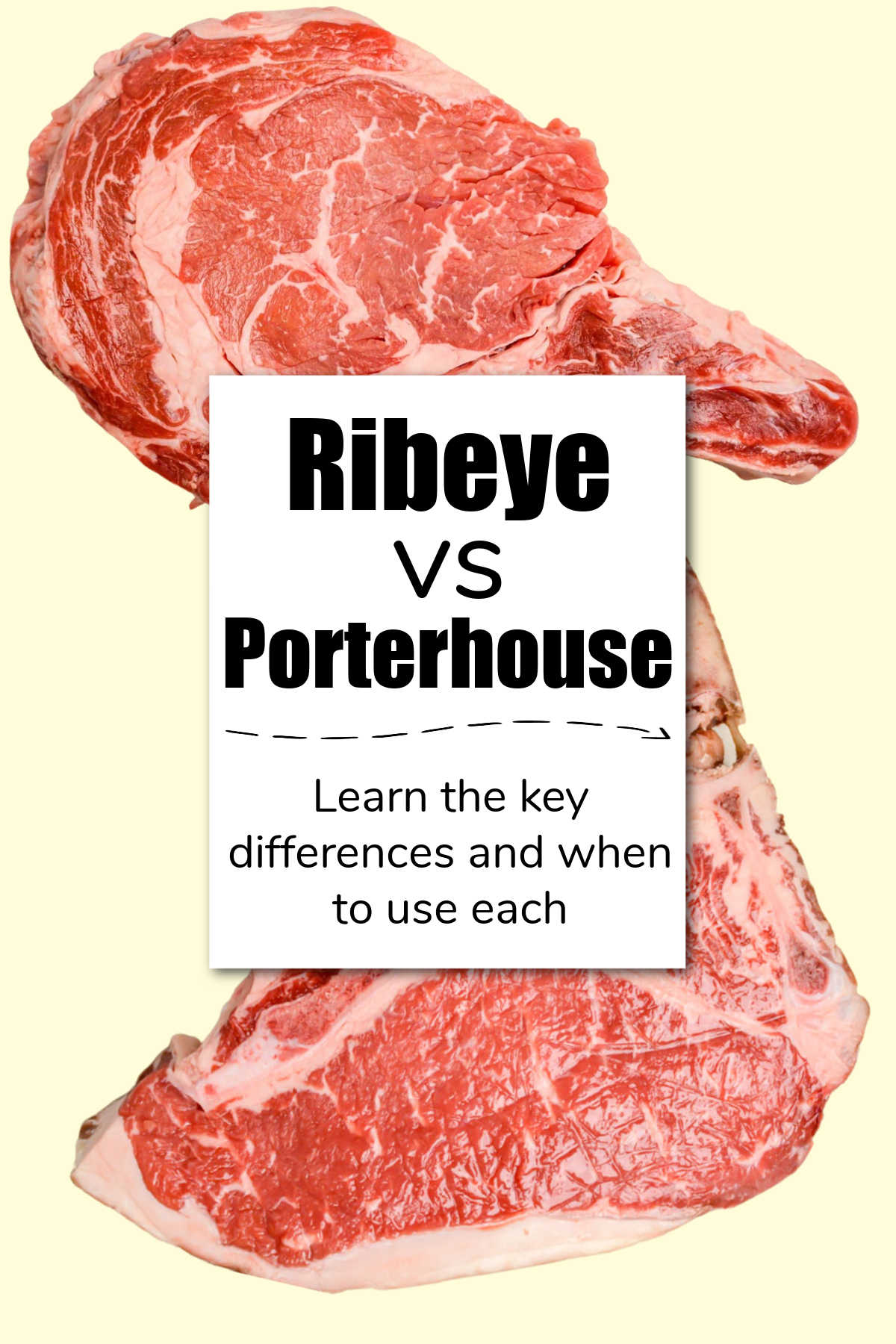
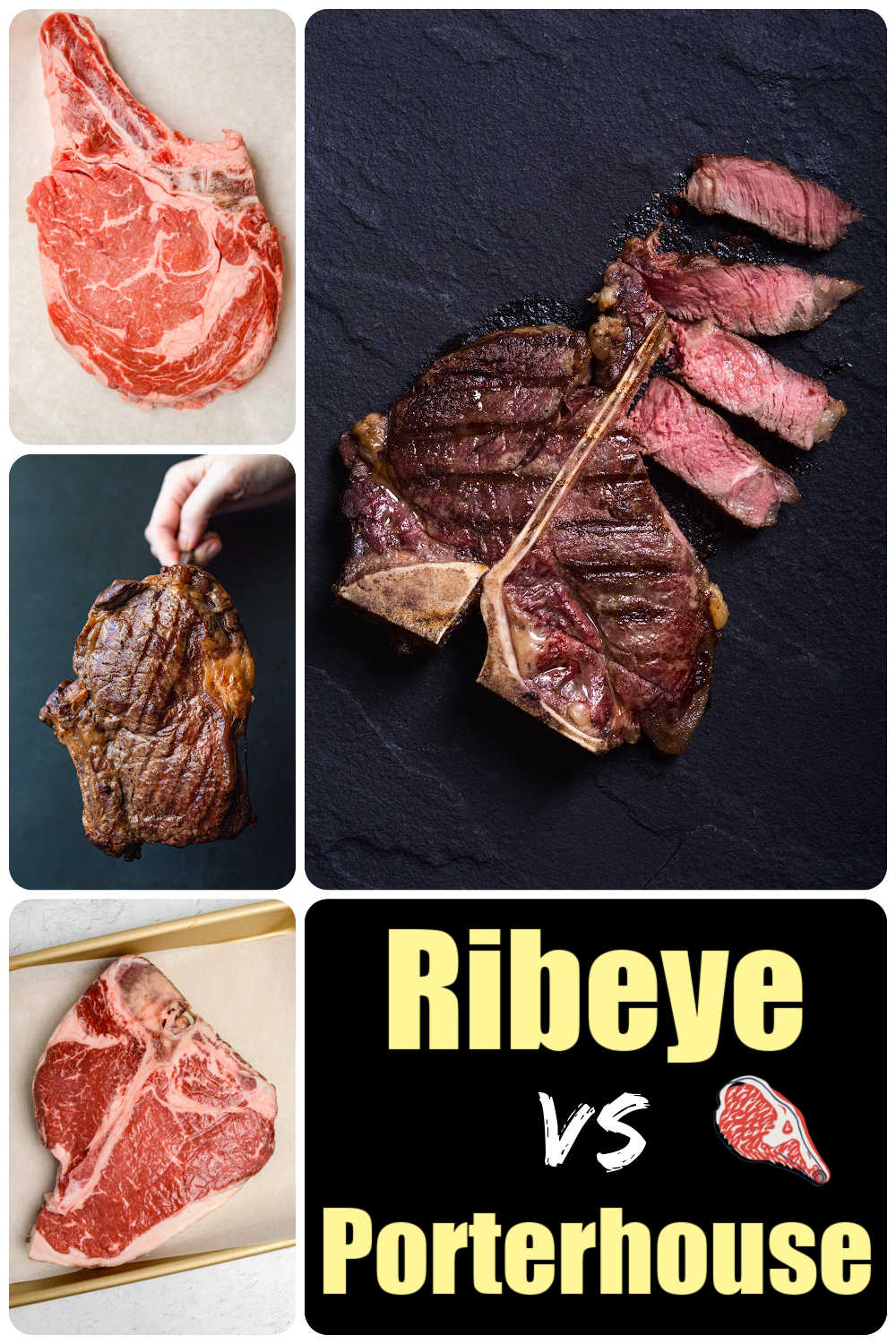


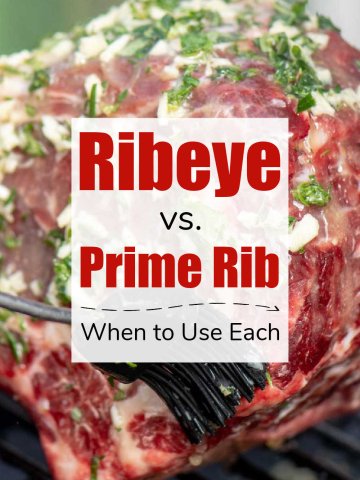
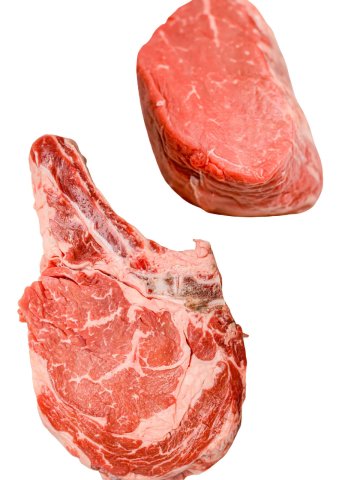
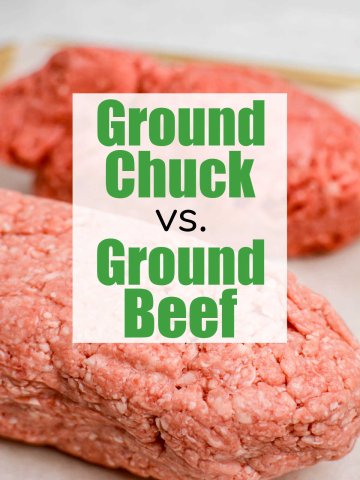
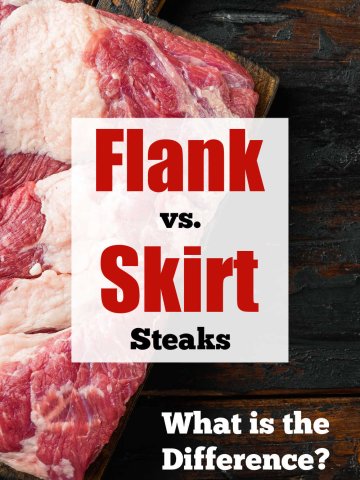
Leave a Reply